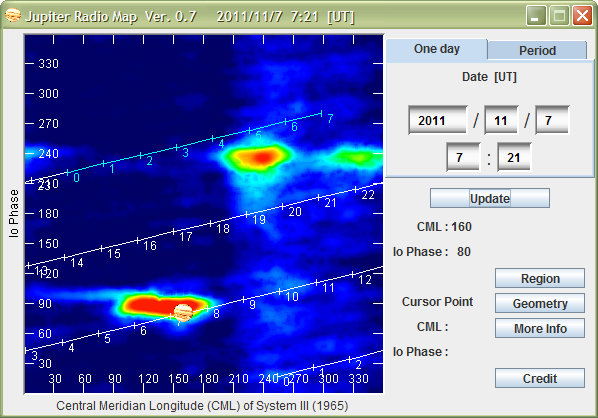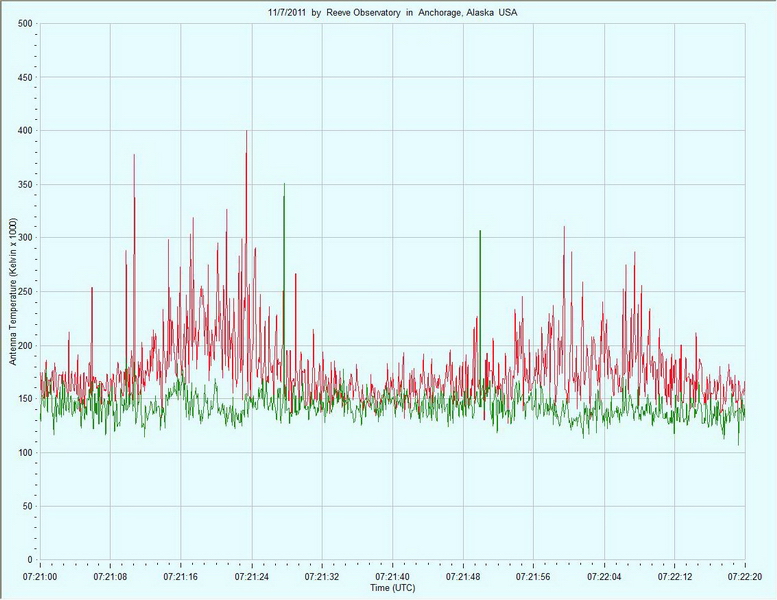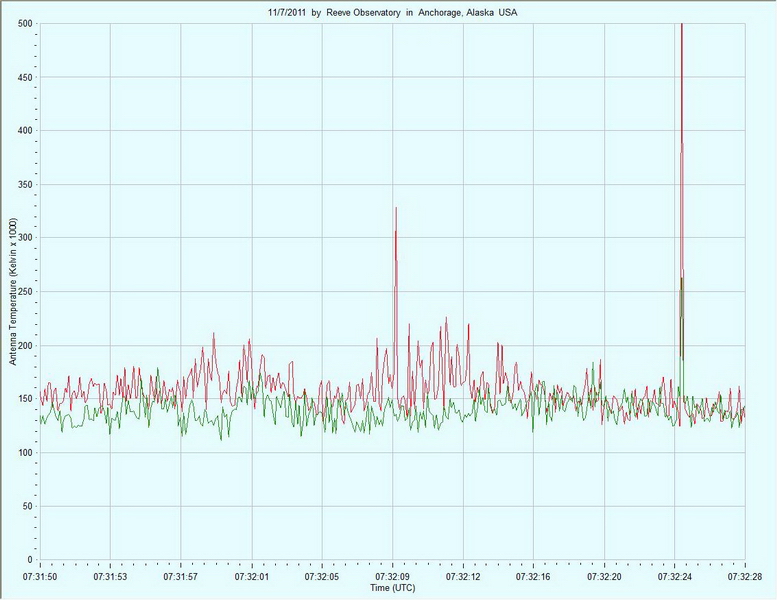Jupiter Io-B on 7 November 2011
This was a mid-evening pass. We used two Icom R-75 HF Receivers, one tuned to 19.556 MHz (LSB), corresponding to the Red trace in the charts below, and the other tuned to 20.903 MHz (LSB), corresponding to the Green trace. The receivers were connected to the antenna through a multicoupler. The antenna was an 8-element log periodic antenna pointed about 88 degrees true (no tracking was used). By coincidence, the ambient RF noise level in this direction is relatively low (150k K).
 The predicted activity included an Io-B enhanced storm
from 0630 to 0820. On Receiver A (19.556 MHz) we detected some activity at 0721
lasting about 1 minute. We also detected brief bursting at 0732 and 0733 on the
same receiver. We detected very weak bursts on Receiver B (20.903 MHz) only at
about 0721.
The predicted activity included an Io-B enhanced storm
from 0630 to 0820. On Receiver A (19.556 MHz) we detected some activity at 0721
lasting about 1 minute. We also detected brief bursting at 0732 and 0733 on the
same receiver. We detected very weak bursts on Receiver B (20.903 MHz) only at
about 0721.
The Jupiter Radio Map is for reference and shows the orientation of the Io-B enhanced source at the observation time. We observed mostly S-bursts (popping sound) during the periods mentioned above. Links to stereo sound files of the bursts are provided below the charts. All times and dates are UTC.
At the time of the charts Jupiter was at azimuth/elevation of approximately 147 degrees true and 37 degrees above the horizon.

Click here to listen to a mono sound file for the first period of bursting in the chart above
Click here to listen to a mono sound file for the second period of bursting in the chart above
